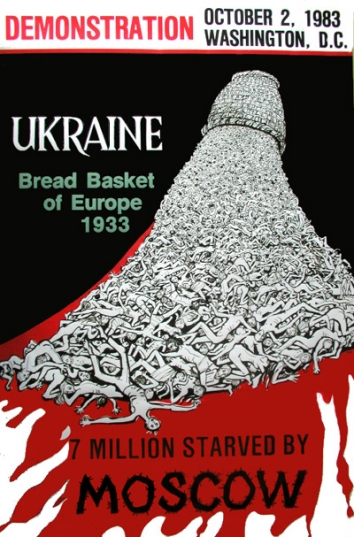Featured Galleries USUBC COLLECTION OF OVER 160 UKRAINE HISTORIC NEWS PHOTOGRAPHS 1918-1997
 Holodomor Posters
Holodomor Posters

Successful BRHE Program to Sunset
CRDF Global, Arlington, VA, USA
February 08, 2012
 2012 marks the last full year of funding for CRDF Global’s Basic Research and Higher Education Program (BRHE). This program was established in 1998 with funding from the John D. and Catherine T. MacArthur Foundation and Carnegie Corporation of New York. Through BRHE, CRDF Global and the Ministry of Education and Science of the Russian Federation established 20 Research and Education Centers in 18 cities across Russia. Funding from the BRHE program increased the research capacity of the Centers with scientific equipment and supplies, supported young researchers and allowed them to participate in scientific conferences, and provided training in research management, English language for scientific presentations, and technology innovation.
2012 marks the last full year of funding for CRDF Global’s Basic Research and Higher Education Program (BRHE). This program was established in 1998 with funding from the John D. and Catherine T. MacArthur Foundation and Carnegie Corporation of New York. Through BRHE, CRDF Global and the Ministry of Education and Science of the Russian Federation established 20 Research and Education Centers in 18 cities across Russia. Funding from the BRHE program increased the research capacity of the Centers with scientific equipment and supplies, supported young researchers and allowed them to participate in scientific conferences, and provided training in research management, English language for scientific presentations, and technology innovation.
When BRHE began, Russian universities carried out very little research. Since 2009, the Russian government has designated 29 “National Research Universities,” eight “Federal Universities” and two National “Special Status” universities. 15 of the BRHE host universities have achieved one of these superior designations. This dramatic increase in Russian government support for university-based research is a striking demonstration of the BRHE program’s success in introducing a model of research as an integral part of higher education in Russia.
CRDF Global, with the support of Yaroslavl State University and the Russian Ministry of Education and Science, held its final Pan-REC conference under the BRHE program on September 20-21, 2012 in Yaroslavl, Russia. Representatives from all 20 Research and Education Centers (RECs), partners from local and international organizations and members of the BRHE Governing Council gathered to discuss development of Russian universities in the context of the experience gained over the past 12 years, since the start of the first REC’s pilot project in Nizhny Novgorod in 1999.
Informed by its experience under BRHE, CRDF Global has successfully applied the BRHE model in five other Eurasian countries with other sources of funding, and has adapted the model to be effective in the developing world.












